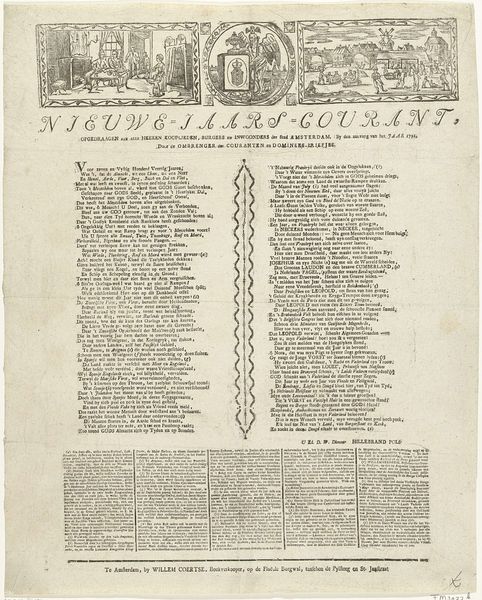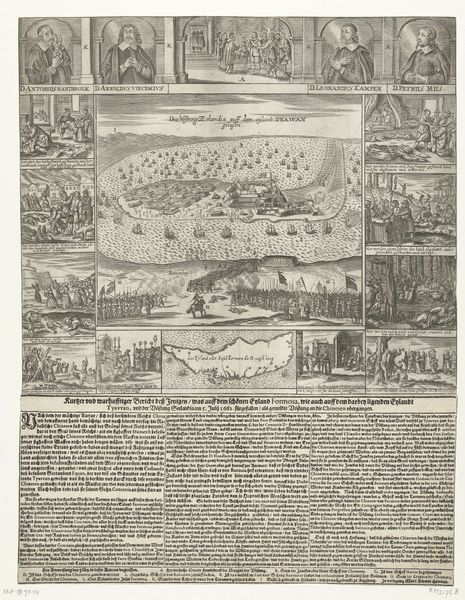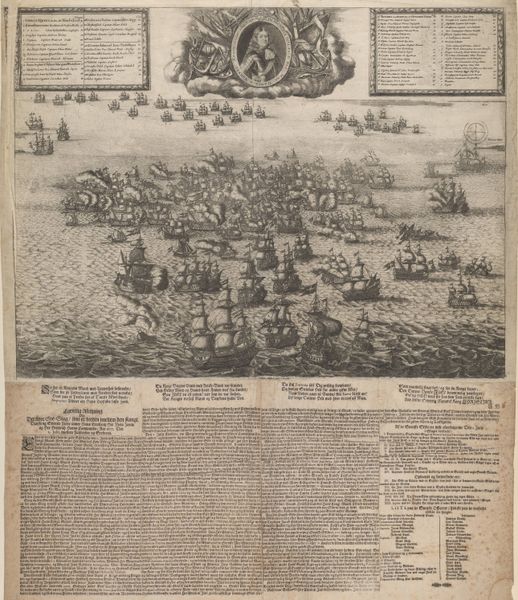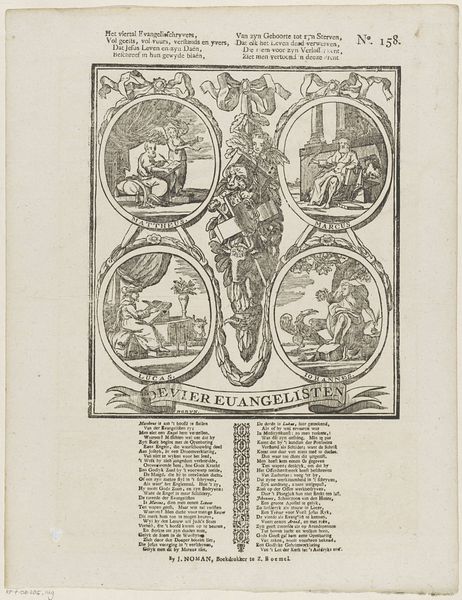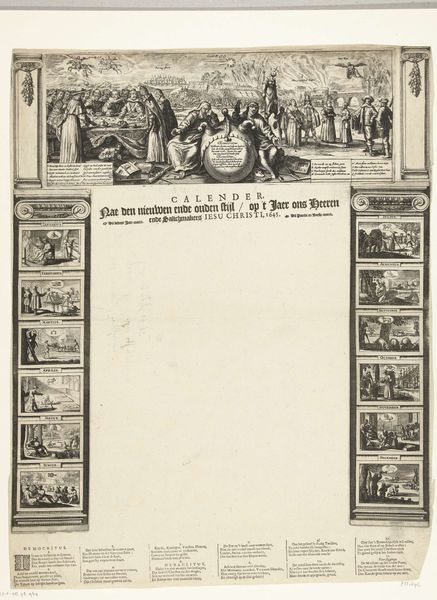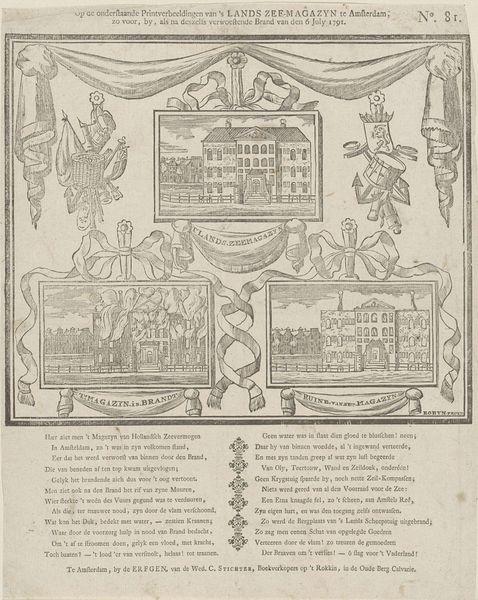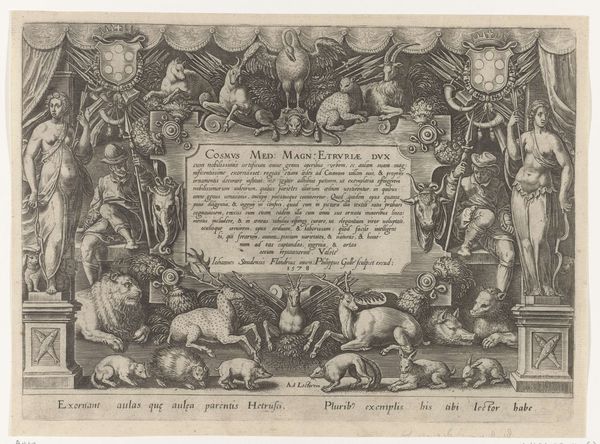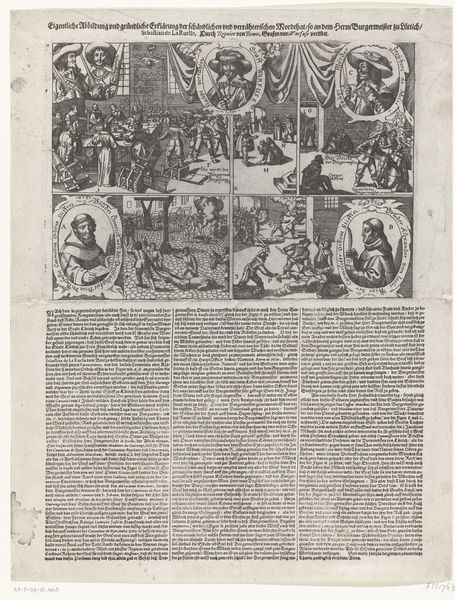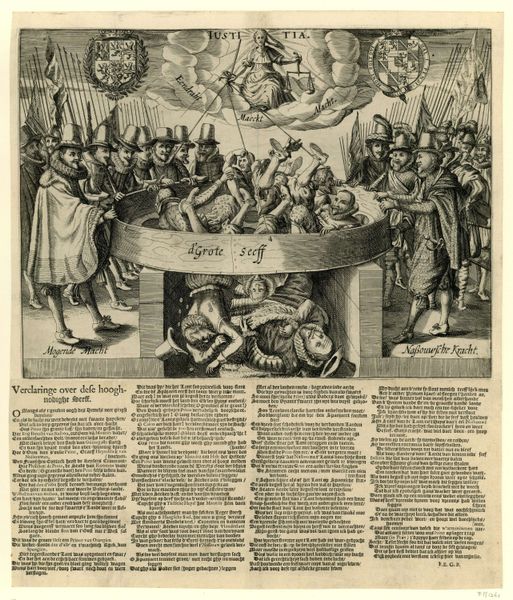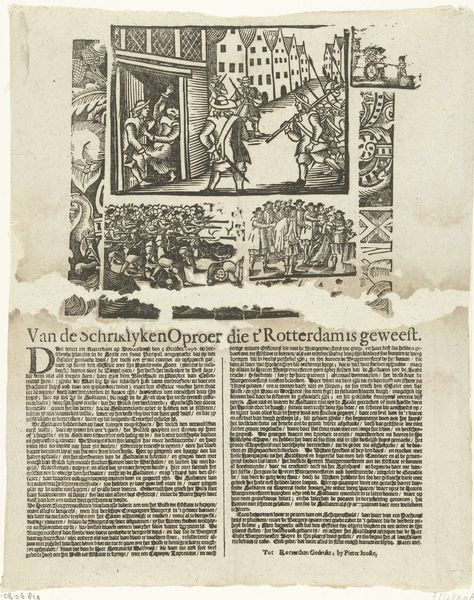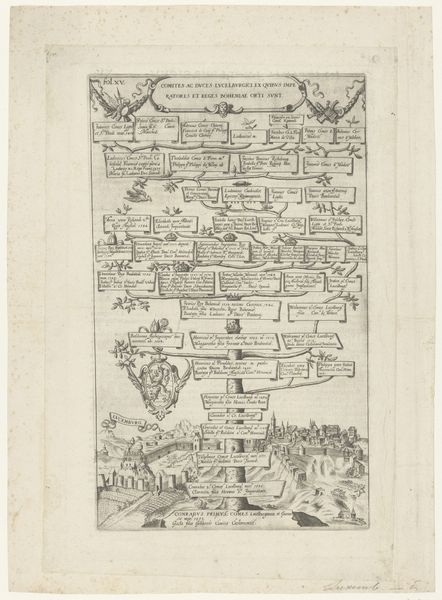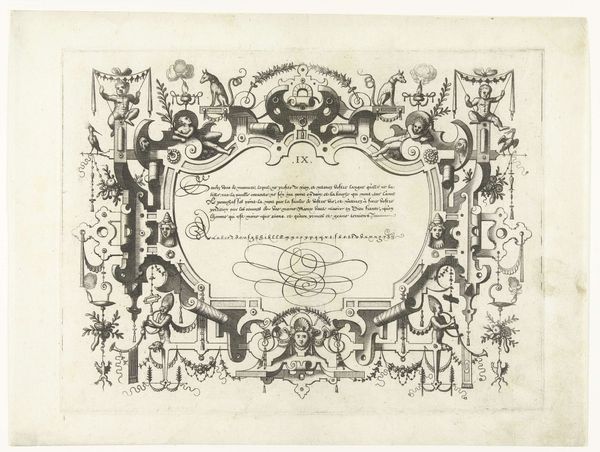
graphic-art, print, engraving
#
graphic-art
# print
#
pen illustration
#
old engraving style
#
landscape
#
cityscape
#
history-painting
#
engraving
Dimensions: height 389 mm, width 291 mm
Copyright: Rijks Museum: Open Domain
Editor: Here we have "The Campaign of 1708," created in 1709 by an anonymous artist. It's an engraving, now held at the Rijksmuseum. It has a very formal and cartographic feel, like a war room briefing made into art. How do you interpret this work? Curator: What strikes me is how this print isn't just a depiction of a military campaign, but a strategic communication. Consider the context: it’s 1709, the War of the Spanish Succession is raging. What does this meticulously detailed cityscape, framed by portraits and battle maps, communicate to its intended audience? Who might that have been? Editor: I imagine it was meant to inform or perhaps even celebrate a military victory for the Dutch Republic. The portraits might be of important leaders. Curator: Exactly! It's a visual narrative, designed to shape public opinion. Note how the city of Lille is rendered with such precision. Does this precision suggest objectivity, or could it mask a particular agenda? Think about the role of prints in disseminating information and propaganda during this period. Editor: So it’s not just art, but a political tool, almost like an early form of visual media shaping the narrative around the war. It really places the work in the heat of that historical moment. Curator: Precisely. By analyzing the imagery and understanding its socio-political context, we uncover the complex ways in which art serves power, and resists it, during times of conflict. This approach also begs to consider what other narratives might be ignored in its telling. Editor: That's a great point! I hadn't considered the perspectives that are left out of this triumphant depiction. This conversation definitely deepened my understanding, taking it beyond just an aesthetic experience.
Comments
No comments
Be the first to comment and join the conversation on the ultimate creative platform.
